Go with the flow

Roula Khalaf, Editor of the FT, selects her favourite stories in this weekly newsletter.
Humans turned out to be a particularly dexterous terrestrial species capable of crawling, walking, running, climbing and jumping; but water hasn’t been our element for millions of years. What we did develop is an unparalleled capacity for imagining dangers in it. Our ancestors drew monsters and mythical creatures lurking in the uncharted blue in the corners of their navigational charts. Historically and emotionally, deep waters have always been associated with some of our most primal fears.
I have a vivid memory of a midsummer afternoon, years ago, navigating a small boat off the Ligurian coast, when a friend pointed out that we were over particularly deep waters. Never before had I paid attention to the way light disappeared into that dense, cobalt blue and, even though I had been on my high-school swim team, the mere thought of dipping my toes in conjured an almost overwhelming vertigo.

Fast forward to Ibiza, June 2020, two years after I relocated to a farm in the island’s north with a renewed hunger for adventure. It was barely dawn, and I was in the bay of San Antonio boarding a vessel headed towards Ses Margalides. These rocky islets emerging out of the Mediterranean form a natural tunnel through which I would shortly swim my first ever open-water race. I will never forget the paralysing fear that constricted me as I moved out over that same deep blue I had seen in Liguria years before. The unpredictability of currents, the possibility of life beneath the surface, the sheer vastness all triggered an array of irrational fears. Putting my head under water became almost impossible. I understood – for the first time, first-hand – that venturing beyond the safety of a pool into a lake, river or ocean is about volumes more than a mere physical challenge.
In retrospect, I understand I was experiencing a panic attack, caused partly by an ill-fitting wetsuit that didn’t allow my thorax to expand in the face of a massive adrenaline rush. But dozens of races later, those first strokes are still the hardest – particularly when I find myself in a swarm of legs and arms. My heart skips forward and my breath quickens: “Stop! Turn around!” insists my mind. There hasn’t been a single challenge where I haven’t seriously considered swapping the two, five or 10 kilometres stretching out in front of me for a cappuccino and a brioche.

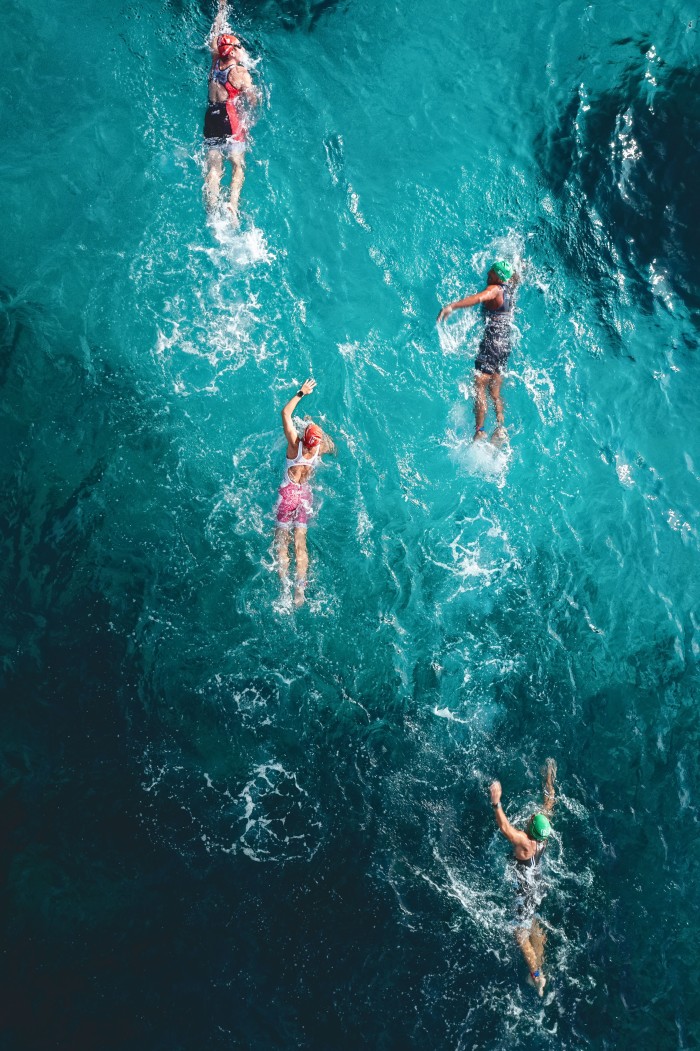
But this is exactly why I keep swimming. Every single time, stroke after stroke – pacing my breath, harnessing my thoughts – an unparalleled sense of accomplishment emerges. It reminds me that fear, the body’s primal response, does not need to dictate my actions.
Whereas a lap-pool swimmer is easily recognisable by their distinctive V-shaped torso (and by the mess of fins and hand paddles they tend to carry around in those black mesh bags), a seasoned open-water swimmer is usually harder to identify. Their anatomy isn’t as telling; if anything, a face roughened by salt and wind, like a sailor’s, might give them away. But adaptability and determination don’t show in the physique – neither does stubbornness, a trait I find essential to battle against wind, waves and currents. It is true that some wetsuits might have better buoyancy than others, but apart from that there isn’t much you can wear to be faster at sea. Open-water swimming is not about the latest equipment or the newest technology. It is an honest sport that ultimately comes down to your flow; the way you cut your body through water, trying to disrupt its surface as little as possible, almost as if you’re not even there.

Over the summer, an image popped up on my Instagram feed: a string of luminescent buoys lighting up a canal under Copenhagen’s evening sky. It was an advertisement for an urban open-water challenge, circumnavigating the Danish parliament on a canal network in the centre of the city. Without giving it a second thought, I signed up with my usual swim partner – who also happens to be my physiotherapist – to two different races: a daytime 2km, and the much more sought-after evening race of the same distance.
We landed in Copenhagen to mild, late-August weather, a windy afternoon with overcast skies. An easy 30-minute bike ride got us from the airport to the historic centre, where we checked into our hotel before heading towards the waterfront. Our first swim, at 6pm, had a rolling start with pre-assigned 15-minute intervals, thus avoiding the overcrowded heats you get elsewhere. To our surprise, the canal water was not only crystal clear, but also taste- and odour-free – very different to the saline hangover of seawater, which can cause nausea. Local authorities apparently monitor the water quality on a regular basis; even moderate rain has prompted them to suspend previous editions, due to the risk of sewage-water overflow.
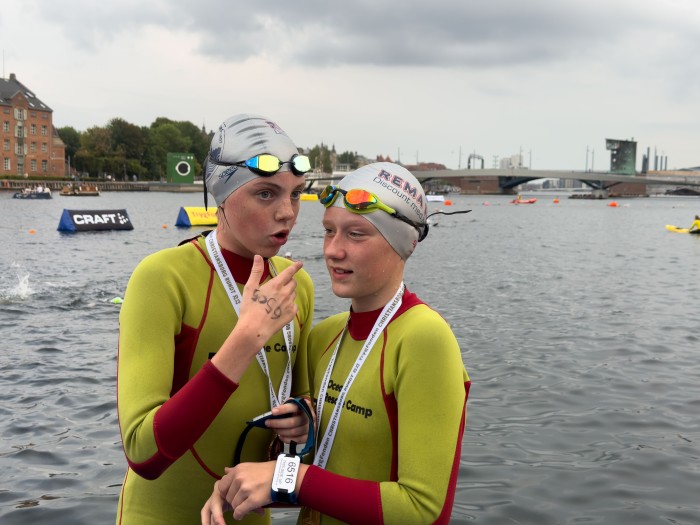
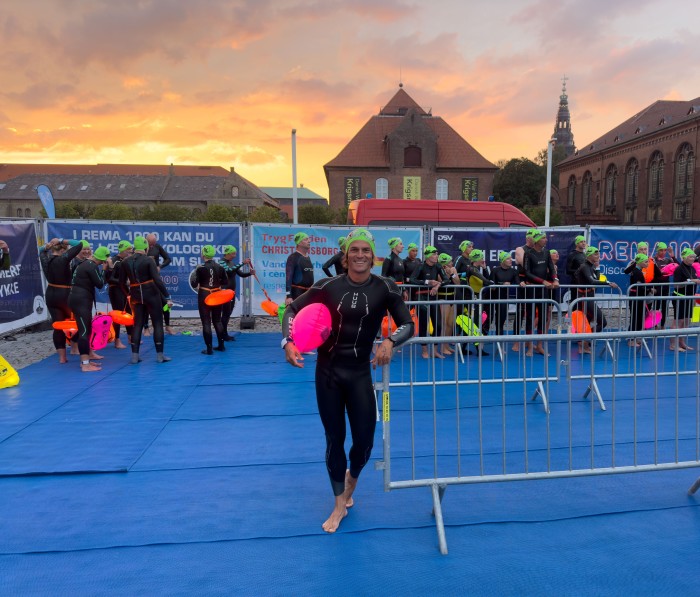
Once we established that we weren’t swimming in urban debris, my biggest challenge turned out to be the low bridges that link Christiansborg Palace – the seat of the parliament – to the rest of the city. With limited headspace between the water surface and the bottom of the bridge, swimming under them brought on a tension similar to my first open-water races: quickening heartbeat, faster, shorter breaths. I was able to control this by momentarily switching, each time I went under one, to a two-stroke inhale in place of my usual three-stroke pace. For most of the two kilometres my partner and I swam comfortably side by side – unlike on longer sea races, where we tend to swim in line or else in protective clusters for better hydrodynamics – and managed to overtake some of the more amateurish participants.

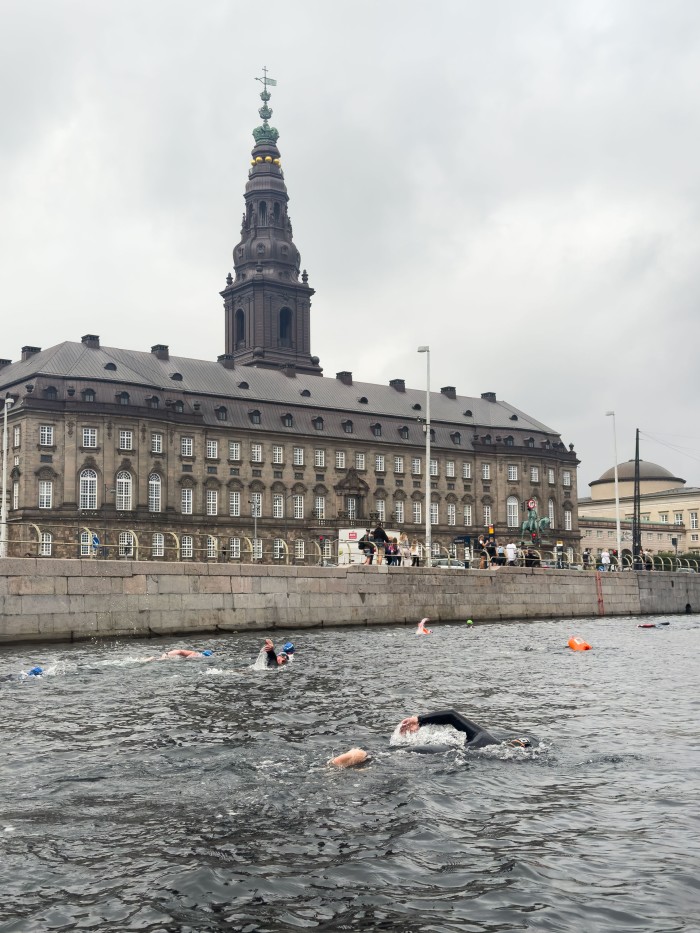
Two hours later, as the sun was setting behind red-brick buildings and city lights started to cast their glow, hundreds of swimmers of varying ages, fitness levels and body sizes made their way to the start line of the night race. A noticeable temperature drop – and the novelty of the experience – gave us an additional energy boost that powered us through the first 700m. Then, as we emerged from under a bridge in front of the Børsen –the 17th-century stock exchange – I reached out to touch my partner with one hand: slow down.

We stopped for a moment and removed our goggles to take it all in. The already pitch-dark waters had been turned into a multicoloured spectacle by dozens of fluorescent buoys. Above our heads at street level, both sides of the canal were lined with passersby who seemed equally mesmerised by the sight. We started up again; at the next turn, as we entered the narrow Frederiksholms Canal, my partner dared me to swim under Marmorbroen. the rococo marble bridge that provides access to the palace’s riding grounds, without taking a breath. We propelled through total darkness, no other swimmers ahead of us, trusting nothing but our own sense of direction – by now, thanks to countless sessions in cobalt seas, a reliable internal compass.
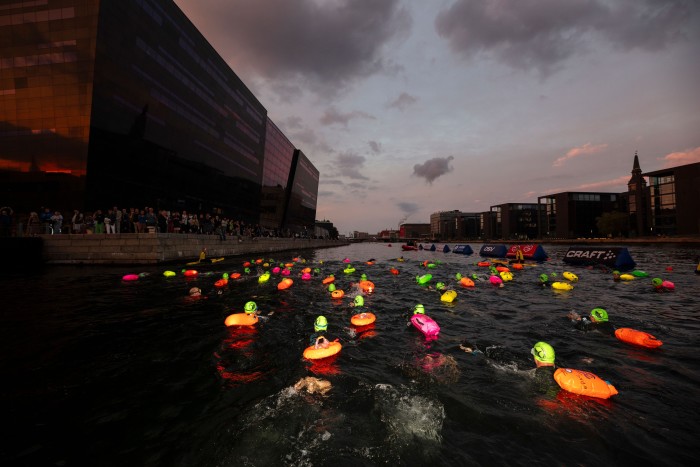
Something happens when you swim in a pack, be it in the deep blue of the Mediterranean or through the canals of a Scandinavian city. A special form of camaraderie emerges from the experience. It seems specific to sports that revolve around open water – sailing, surfing, diving – and stems from a simultaneous recognition of our own personal feats and a shared, healthy respect for the element itself. We swim for fun, for sport and for our health; we swim to explore, to hunt and to survive. We swim always in the hope of emerging stronger on the other side, both physically and mentally. And by doing so, we often end up nurturing one of our most vital needs: to have a sense of belonging to something greater than ourselves.
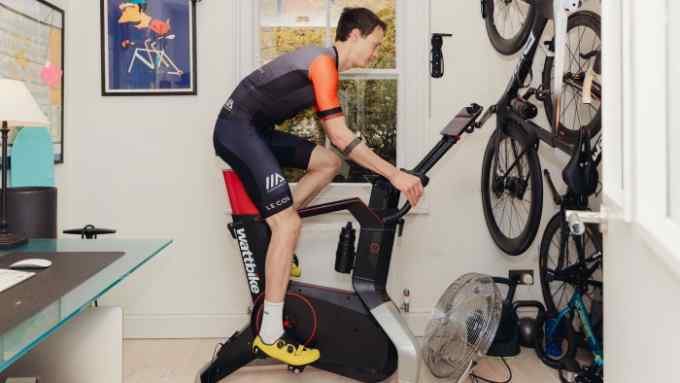
Comments